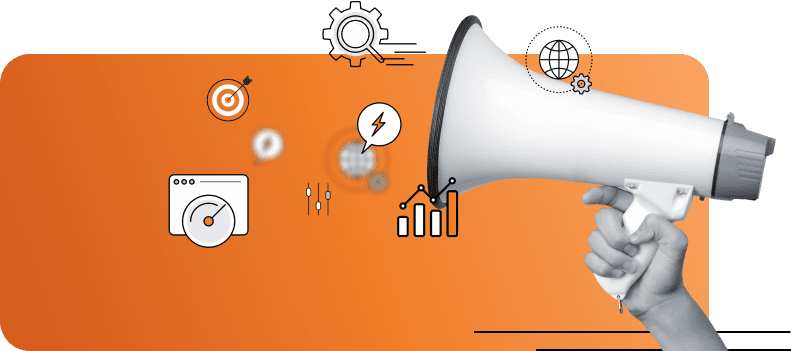Are you looking to increase the efficiency and profitability of your business? The customer segmentation model offers an effective way to do just that.
By understanding the different needs, wants, and buying behaviors of each customer group, you’ll be able to tailor campaigns directly toward them and focus on the areas in which revenue growth is most likely.
In this blog post, we’ll explore how segmentation models can help your business better understand its customers while optimizing operational effectiveness for increased results.
Read on to learn more about what benefits that user segmentation model provides and how it can be used to grow your business!
An Overview of Customer Segmentation and Its Benefits
Customer segmentation is a marketing strategy that involves dividing a customer base into smaller groups that have similar needs or characteristics.
The Customer segmentation model helps businesses identify how to best reach and satisfy their different customer segments. By segmenting customer, businesses can provide:
- Personalized experiences
- Targeted marketing campaigns
- Tailored products or services that speak directly to their customer’s needs
To create meaningful segments that businesses can leverage, Segmentation modeling involves analyzing various data points, such as:
- Demographics
- Behavior
- Purchase history
Some customer segment example could include age, income level, lifestyle, or geographic location. By deploying SEM or search engine marketing, businesses can reach their target customers through search engine advertising.
Ultimately, effective customer segmentation can lead to increased customer loyalty, higher profits, and a greater competitive advantage in the marketplace.
How to Identify Your Target Audience Groups
As a business owner or marketer, one of the most critical aspects of crafting a successful marketing strategy is identifying your target audience groups.
One way to achieve this is through a customer segmentation model, which involves dividing your customer base into distinct segments based on specific characteristics.
Properly segmenting your customer base can help you tailor your marketing messages to each group’s unique needs and wants. To identify your target audience groups, start by:
- Analyzing your existing customer data
- Developing customer segment examples
By implementing an effective segmentation strategy, you can maximize the effectiveness of your marketing efforts and increase the chances of converting leads into loyal customers.
Establishing Segments that are Meaningful to Your Business
In the world of business, it is crucial to identify and understand your customers. This is where segmentation modeling comes into play.
By using a user segmentation model, companies can break down their customer base into smaller groups. This helps businesses tailor their strategies to better cater to specific customer segment examples, ultimately increasing customer satisfaction and revenue.
However, with so many different ways to go about segmenting customer groups, it can be overwhelming for business owners to know where to start. That’s why it’s important to first establish segments that are meaningful to your business, based on factors such as:
- Profitability
- Potential for growth
With a little bit of time and effort, establishing effective customer segments can lead to significant long-term benefits for your business.
Building a Data-Driven Model for Profitability
Every business aims to be profitable, but the key to achieving this is through understanding its customer base. A user segmentation model is a valuable tool for businesses to gain insight into how they can improve their profitability.
Segmentation modeling involves dividing your customer base into smaller groups based on similar behaviors and characteristics. By segmenting customer, businesses can:
- Better cater to their needs and wants
- Improved customer satisfaction
- Increase profits
Some customer segment examples include demographics, psychographics, and behavioral segmentation. Furthermore, Search Engine Optimization (SEO) plays a vital role in building a profitable model by increasing a business’s online visibility and driving traffic to its website.
By analyzing customer data and embracing digital marketing strategies, businesses can create a sustainable model that will lead to long-term profitability.
Implementing the Customer Segmentation Model in Your Business
Effective customer segmentation is vital in today’s competitive business environment. A user segmentation model can help you better understand your customers, their needs, and their preferences. By segmenting customer data, you can:
- Create more targeted marketing campaigns
- Develop personalized products and services
- Improve customer retention
There are various segmentation modeling techniques that you can implement. The key is to use the customer segment examples that fit your business best.
Utilizing a customer segmentation model can guide you in making data-driven decisions that can help improve your bottom line, enhance customer satisfaction, and boost overall business success.
Making Adjustments Based on Results & Keeping Track of ROI
As companies strive to optimize their marketing efforts, it’s crucial to make adjustments based on results and keep track of ROI. One effective way to do this is by utilizing a user segmentation model. Segmenting customer based on their behavior and preferences can:
- Tailor marketing messages to specific groups
- Improve the chances of conversion and retention
Additionally, segmentation modeling can aid in identifying high-value customers and pinpoint growth opportunities. Social media is a valuable tool for monitoring and measuring ROI.
Companies can make informed decisions for marketing strategies and adjust as necessary by tracking metrics such as:
- Engagement rates
- Conversions
Overall, making adjustments based on results and understanding ROI is essential for any successful marketing campaign.
By segmenting your customers, you can gain a deeper understanding of their needs and buying behaviors. With that in-depth knowledge, you’ll be able to craft and tailor marketing campaigns and offers for specific groups or individuals more effectively.
Adopting a customer segmentation model will also lead to increased efficiency and profitability, allowing you to maximize potential returns while improving customer experience.
Get started today by defining your target audience, establishing meaningful segments, running data-driven models for profitability, implementing the model, and tracking how well it performs with ROI monitoring.
With the right preparation and optimization groundwork in place, you’ll begin seeing rewards quickly as your business grows into its success!









